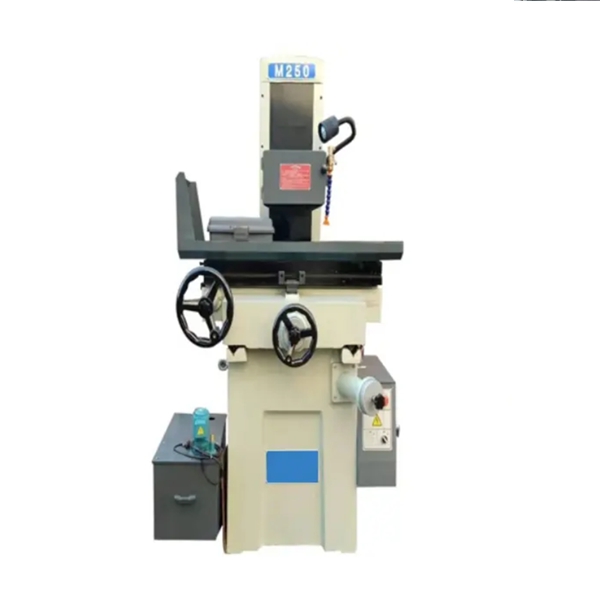Surface grinders use high-speed rotating grinding wheels for grinding, and a few use other abrasives and free abrasives such as whetstone and abrasive belts for processing, such as honing machines, ultra-finishing machine tools, belt grinders, grinding machines and polishing machines.
The working principle of the surface grinder is as follows:
- The main movement of the machine tool: The grinding wheel is directly driven to rotate by the motor installed in the grinding head shell, which is the main movement of the surface grinder. The main shaft of the grinding head can move laterally along the horizontal guide rail of the slide plate, and the slide plate can also move vertically along the guide rail of the column to adjust the vertical position of the grinding head and complete the vertical feeding movement. The electromagnetic chuck is usually installed on the worktable of the surface grinder for clamping ferromagnetic parts. The electromagnetic chuck can also be removed, and other fixtures can be replaced or the workpiece to be processed can be directly mounted on the worktable.
- Feed movement Longitudinal feed motion: the linear reciprocating motion of the worktable along the longitudinal guide rail of the bed. Lateral feed movement: The horizontal intermittent feed of the grinding head along the horizontal guide rail of the worktable is carried out at the end of the reciprocating stroke of the worktable.
- Vertical feed movement: The grinding head slide plate moves along the vertical guide rail of the machine tool column, which is used to adjust the height of the grinding head and control the grinding depth feed. Except for the rotation of the main shaft, all the movements of the machine tool are realized by the hydraulic transmission system, and can also be carried out manually.
4.The cutting motion of the surface grinder is as follows:
1. The main motion is the rotational motion of the grinding wheel on the main shaft of the grinding head 2. It is directly driven by a motor with a power of 2.1/2.8KW.
2. Feed movement: (1) Longitudinal feed motion is the linear reciprocating motion of the worktable along the longitudinal guide rail of the bed, which is realized by the hydraulic transmission system. (2) Lateral feed movement is the lateral intermittent feed of the grinding head along the horizontal guide rail of the slide, which is completed at the end of each round trip of the worktable. (3) Vertical feed movement is the movement of the slide along the vertical guide rail of the column. This movement is done manually to adjust the height of the grinding head and control the grinding depth.
Post time: Nov-06-2022





